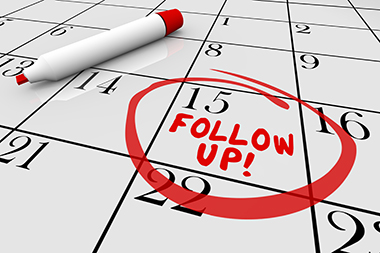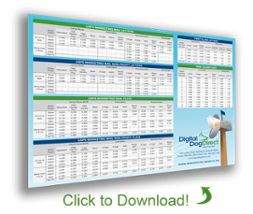 Picture this scene: Your marketing team has just put the final touches on a direct mail marketing campaign that is sure to knock the socks off of your target audience. The mailing list has been groomed; the proofs have been reviewed; the CTA is clear. You send your direct mail campaign out into the world and then…nothing.
Picture this scene: Your marketing team has just put the final touches on a direct mail marketing campaign that is sure to knock the socks off of your target audience. The mailing list has been groomed; the proofs have been reviewed; the CTA is clear. You send your direct mail campaign out into the world and then…nothing.
What many businesses don’t realize is that launching a campaign does not mean the work is over. On the contrary—once a campaign has reached its target audience, that’s when your team should shift its attention to the follow up strategy. Whether it’s connecting with customers via phone call, email or even another direct mail campaign, you should always be considering how the campaign you’re working on now can allow you to follow up most effectively. Here’s why following up is a can’t-miss part of your direct mail campaign.
It helps keep your business top of mind
Here’s the thing: You need to make sure you stay top of mind by reaching your target customer with multiple different touchpoints. By following up directly with people who received your latest mail campaign, you’ll know that a) they are already familiar with your business and b) you’ve given them another (read: more than one) experience to remember you by.
Most people don’t convert right away
Much to every marketing team’s dismay, customers rarely convert as a result of just one campaign, no matter what the marketing channel. Rather, most purchasing decisions usually rely on multiple touch points over a span of time. While following up on a direct mail campaign can benefit nearly every kind of business, it is especially important for those that have longer buying cycles, such as buying a car or a house. In those instances, crafting a well-timed strategy to stay on the customer’s radar as they consider their options is essential.
Following up prevents leads from going bad
Much like a carton of leftovers in the back of your fridge, you should not forget about, ignore or underestimate your leads. (We’ll give you a second to reread that last sentence and think about it.) Seriously, though, there’s really no time when you should give up on a potential lead, especially if it’s a lead that at some point has indicated interest. That’s because even though it can be hard to know exactly when a customer most wants to hear from you, if you don’t keep in touch with them, it’s possible you’ll miss an opportunity to present yourself as an option when they are looking for the kinds of services or products your company offers. Keep in mind, we’re not saying you should be blindly targeting all customers who haven’t acknowledged you in a while (after all, grooming and targeting your list is a direct mail best practice)—all we’re saying is you never know when a lead might be ready to hear from you again, even if it’s been awhile. This Inc. article said it best: “Tenacity pays.”



Comments